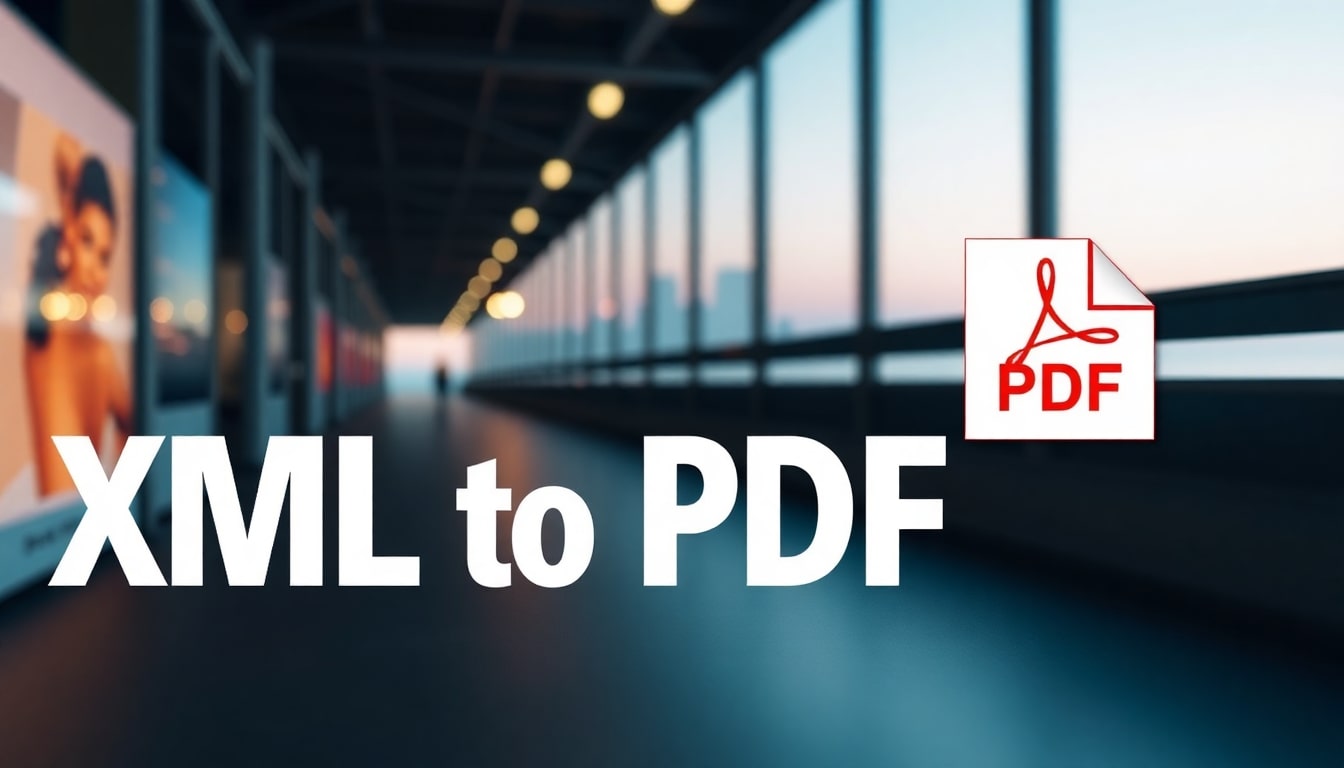In today’s data-driven world, many professionals regularly need to convert XML to PDF to make technical information more accessible and presentable. XML files excel at storing structured data but fall short when it comes to readability. Converting these files to PDF format ensures your information maintains its formatting across devices while becoming significantly easier to share with colleagues or clients who might not be familiar with XML syntax.

Understanding XML and PDF Formats
XML (Extensible Markup Language) serves as a versatile markup language designed primarily for data storage and transport between different systems. It organizes information in a hierarchical tree structure with custom tags that define data elements and their relationships.
PDF (Portable Document Format), on the other hand, was created specifically for document presentation and sharing. Unlike XML, PDFs are designed with visual consistency as a priority, ensuring that documents look identical regardless of the device, operating system, or software used to view them.
The fundamental difference lies in their purpose: XML prioritizes structured data storage with little consideration for visual presentation, while PDFs focus on maintaining consistent visual appearance.
Why Convert XML to PDF?
Converting XML files to PDF format offers several significant advantages:
- Improved readability – Transforms cryptic tags into a clean, formatted document
- Universal accessibility – PDFs can be viewed on virtually any device with free reader applications
- Preserved formatting – Eliminates the risk of data appearing differently across various systems
- Long-term archiving – Provides a more stable format for compliance and reference purposes
Common Challenges in XML to PDF Conversion
Despite its benefits, converting XML to PDF can present several obstacles:
- Structure preservation – Maintaining hierarchical relationships between elements
- Formatting inconsistencies – Applying appropriate styling to raw XML data
- Special character handling – Ensuring proper rendering of symbols and non-standard characters
- Large file processing – Managing complex or extensive XML documents efficiently
5 Reliable Methods to Convert XML to PDF
Method 1: Using Online XML to PDF Converters
Online conversion tools offer the quickest solution for occasional XML to PDF transformation needs. Services like Convertio, Zamzar, and XML-to-PDF provide simple interfaces where you can upload your XML file, adjust basic formatting options, and download the resulting PDF within minutes. These services require no software installation and generally work across all operating systems with a web browser.
Method 2: Converting with Adobe Acrobat
Adobe Acrobat provides professional-grade conversion capabilities with extensive formatting control. To convert using Acrobat, open the application and select “File” > “Create” > “PDF from File.” The real advantage lies in its powerful customization options for fonts, layouts, and styling. While requiring a paid subscription, Adobe Acrobat delivers consistently high-quality results for professional documents.
Method 3: Using Free Office Suites
Free office suites like LibreOffice and OpenOffice offer practical solutions without additional costs. Begin by opening the XML file in the suite’s appropriate application, adjust the formatting by applying styles, then select “File” > “Export as PDF.” These suites excel with XML files that need to be presented as reports with consistent formatting while giving you direct control over appearance without subscription costs.
Method 4: Programmatic Conversion Using Libraries
Developers needing automated conversion can leverage programming libraries like Apache FOP, iText, or Python’s ReportLab. For Java applications, Apache FOP provides robust conversion using XSL-FO stylesheets. These approaches excel in batch processing scenarios or when conversions need to be integrated into existing applications, offering unmatched flexibility for customizing output formats.
Method 5: Specialized XML to PDF Software Solutions
Dedicated conversion software provides purpose-built tools with intuitive interfaces for non-developers. Applications like Oxygen XML Editor, XML Converter, and Altova StyleVision offer visual designers where you can map XML elements to PDF components. Most include batch processing capabilities and custom templates for consistent formatting across documents.
| Method | Best For | Cost | Learning Curve | Customization |
| Online Converters | Occasional use | Free/Low | Very Low | Limited |
| Adobe Acrobat | Professional documents | High | Medium | Extensive |
| Office Suites | Regular documents | Free | Low | Moderate |
| Programming Libraries | Automation/Batch | Free/Low | High | Complete |
| Specialized Software | Regular XML work | Medium/High | Medium | High |
Best Practices for Error-Free XML to PDF Conversion
Achieving error-free conversion begins with proper preparation of your source files. Always validate your XML documents before conversion to identify and fix structural issues, malformed tags, or encoding problems.
Select the conversion tool that best matches your specific requirements. Consider factors like file size, complexity, formatting requirements, and conversion frequency when choosing.
When formatting matters, use transformation templates or stylesheets (like XSL-FO or CSS) to define exactly how XML elements should appear in the resulting PDF. These templates help maintain consistency across multiple documents.
Always review the first converted document carefully before processing batches. Look for issues with character encoding, missing data, or formatting inconsistencies.
Finally, document your conversion process including the tools, settings, and templates used. This documentation proves invaluable when you need to reproduce results or when different team members handle the process.

Conclusion: Choosing the Right XML to PDF Conversion Approach
Selecting the optimal conversion method depends primarily on your specific circumstances and requirements. For occasional conversions of simple files, online converters offer convenience without installation. Those needing more control over formatting might find Adobe Acrobat or free office suites more suitable, while developers handling large volumes will benefit from programmatic approaches.
Consider your technical expertise, budget constraints, and frequency of conversion when making your decision. Organizations that regularly convert XML documents should invest in specialized software or develop automated solutions that integrate with existing workflows.
By understanding the available options and following best practices, you can transform complex XML data into professional PDF documents consistently and without errors, saving valuable time and effort in your document management processes.

